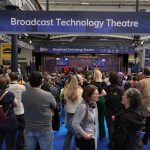Live broadcasts have a truly amazing power to capture and engage viewers attention. This has been true since the early days of television, and it remains true today. Fifty years ago, a record setting 73 million views tuned in to watch The Beatles debut to the American audience on the Ed Sullivan Show. Earlier this […]

Live broadcasts have a truly amazing power to capture and engage viewers attention. This has been true since the early days of television, and it remains true today. Fifty years ago, a record setting 73 million views tuned in to watch The Beatles debut to the American audience on the Ed Sullivan Show.
Earlier this year, live broadcasts of the Sochi XXII Olympic Winter Games opening ceremony attracted enormous numbers of viewers around the world. One data source suggests that 5.5 million people tuned in from France, 2.9 million viewers watched on Germanys ZDF, 3.4 million viewers in the Netherlands watched on Nederland 1, 1.4 million viewers in Finland watched on YLE2, 1.1 million viewers in Norway watched on TV 2, and 2.5 million viewers in Japan watched on NHK1, while in the US, 61.8 million users streamed digital content from NBC. As we look ahead to the 2014 FIFA World Cup Brazil, it appears clear that the viewing numbers will surpass the spectacular numbers posted for previous broadcasts. (FIFA itself declared that nearly half the worlds population tuned in at home to watch the 2010 FIFA World Cup South Africa.)
Watched anywhere in the world on any device, live sports, news, and entertainment are like nothing else. Whether viewed on a computer, smartphone, tablet, traditional television, or even a simulcast in the cinema, live broadcasts bring people together in a special way. While the immediacy of live broadcasts is uniquely compelling to individual viewers, there is also something about such content that makes people want to join in the viewing experience as part of a larger collective. They want to share the moment with others.
Peoples desire to consume live broadcasts as part of a larger group makes the connection between live broadcast and social networks a magical thing. It enriches the collective experience and gives viewers an opportunity to engage more fully with the event itself, as well as with the community of viewers watching that event. A recent example of this happened during the 86th Academy Awards Oscar broadcast, when host, Ellen DeGeneres tweeted a photo during the live telecast and asked views to retweet it. The result of the activity was that the excessive traffic to Twitter actually took it offline for brief periods, and set a record for most of the retweets.
As a live event unfolds goals are scored, questionable calls made, memorable remarks uttered, outlandish outfits revealed, awkward gaffes exposed viewers respond simultaneously, joining in a social-media-based discussion through their mobile devices and contributing their own perspectives to the official
commentary. In some cases, the dialogue held via social media actually becomes a part of the story. While offering a fairly democratic opportunity for people to chime in with their thoughts, social media also has given more formal contributors a new way to weigh in on important events. For example, as politicians take to the air to make speeches, viewers tune in on their televisions, computers, and mobile devices. At the same time, well-known political pundits take advantage of social media to offer fact-checking, arguments for and against, historical perspective, and future predictions.
So, what real meaning does this combination of the live broadcast and social media have for people today? Why is it important? Id say that by reaching around the globe to bring events to millions of viewers, and by enabling people to join in a shared conversation about these events as they unfold, this combination has the power to create community in a way that crosses many cultural, class, and geographic boundaries. With continued innovation around live event broadcasts, particularly for sport, I feel the viewing experience will continue to improve.
The upshot for broadcasters is that they must be prepared to leverage new technologies in delivering compelling and innovative live broadcasts for their viewers. At the Society of Motion Picture and Television Engineers (SMPTE), we foresee critical technical advances such as ultra-high definition content, improved colour gamuts, higher dynamic range, and other factors enabling dramatic improvements to the viewing experience for consumers.
Barbara H. Lange is Executive Director of SMPTE.
















































































